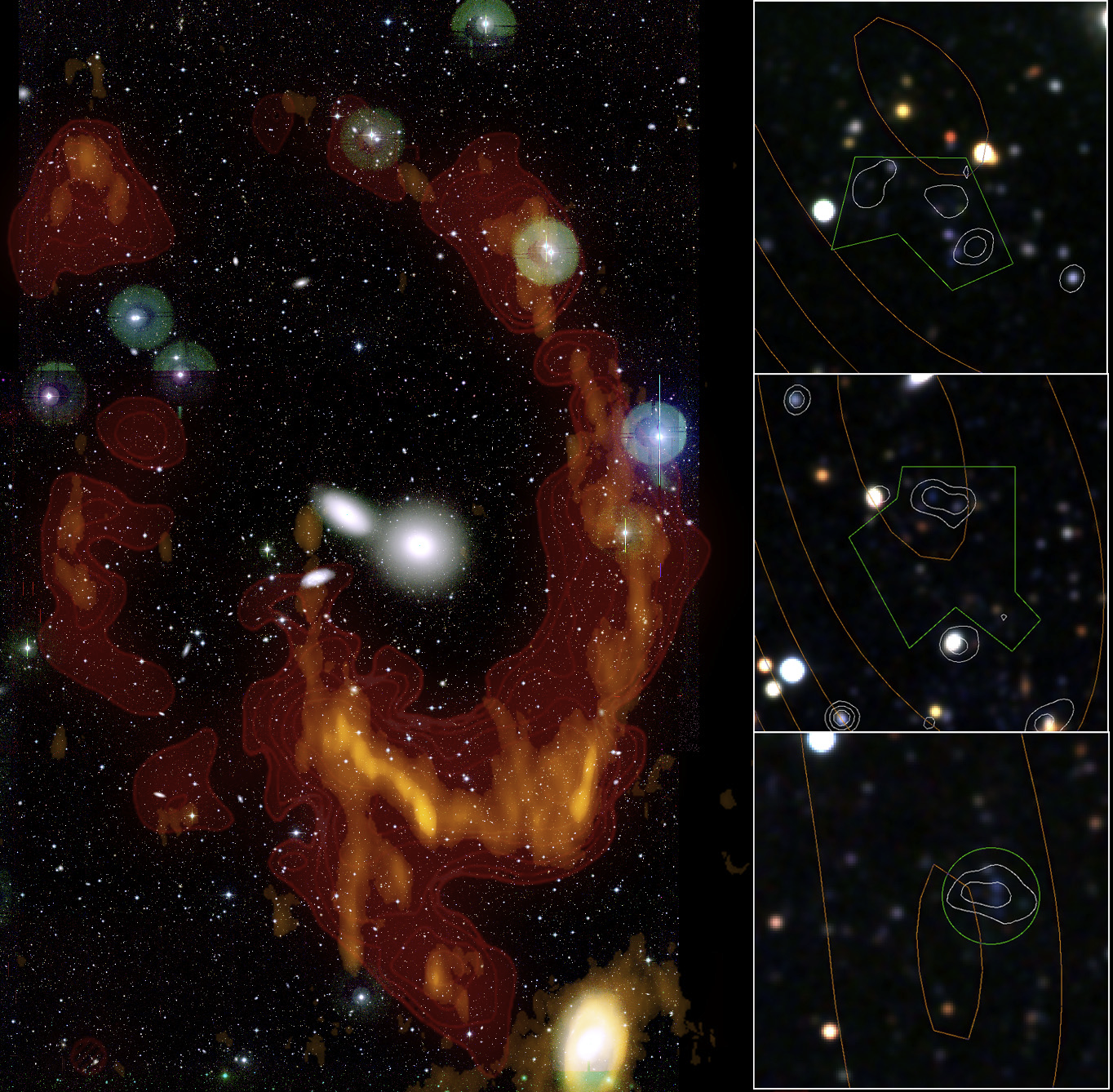Daily Image
25-06-2010The origin of giant intergalactic gas rings
| Submitter: | Paolo Serra |
| Description: | The Leo ring is one of the most spectacular gas systems in the nearby Universe. It is a ring of 2 x 108 Msun of neutral hydrogen and 200 kpc diameter surrounding the galaxy NGC 3384 and its neighbours. The left panel of the above figure shows the ring as observed by Arecibo (red) and the WSRT (orange) superimposed on a deep optical image of the field. A southern tail of gas is visible, which connects the ring to another galaxy of the group, M96. Since its discovery, the Leo ring has attracted the attention of many researchers eager to understand its formation and what this teaches us about how galaxies form, interact and evolve. Recently, the detection of extremely blue stellar light associated to the densest gas clumps in the ring has been interpreted as evidence of extremely low gas metallicity. This led to speculations that the ring could be made of primordial gas (i.e., gas never enriched of heavy chemical elements produced inside stars) left in the intergalactic space after the formation of the galaxy group. In a letter recently accepted for publication by the Astrophysical Journal, a team lead by Leo Michel-Dansac and including Astron's R. Morganti, T. Oosterloo and P. Serra discuss a completely different formation scenario for the Leo ring. Using numerical simulations, they show that structures similar to the Leo ring may form as a result of the head-on collision between two galaxies, with the gas in the ring originally belonging to one of them. If that is how the Leo ring formed (with NGC 3384 and M96 as the colliding galaxies), the ring would not be made of primordial gas. Supporting this hypothesis, Michel-Dansac and collaborators present deep optical images of the stellar light clumps mentioned above (see insets on the right side of the figure), suggesting that low metallicity is not a unique interpretation of their spectral properties. The letter is available at http://arxiv.org/abs/1005.4208 . |
| Copyright: | Leo Michel-Dansac and collaborators |
| Tweet |  |
